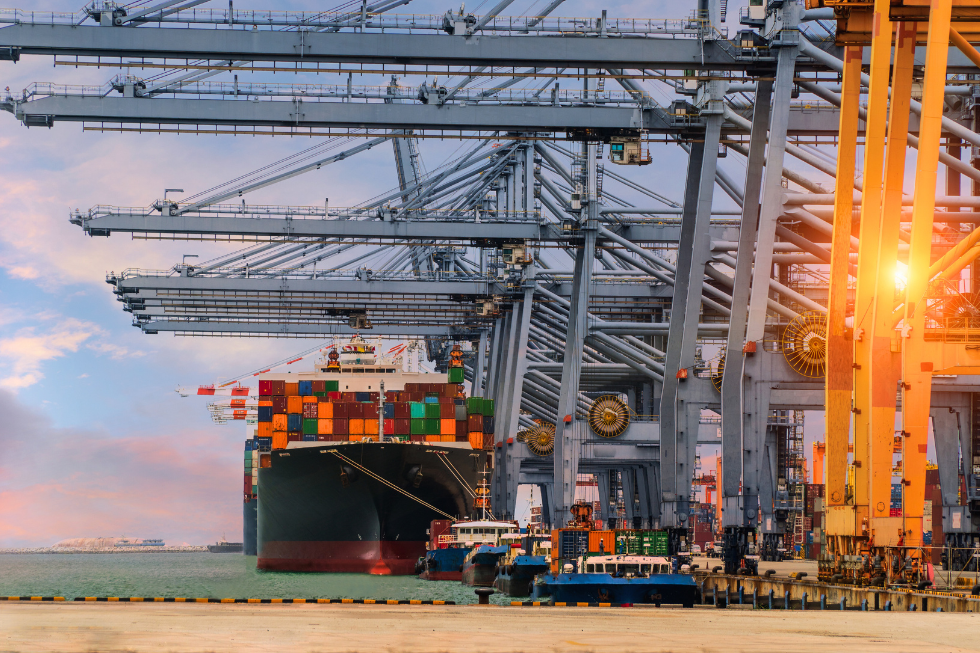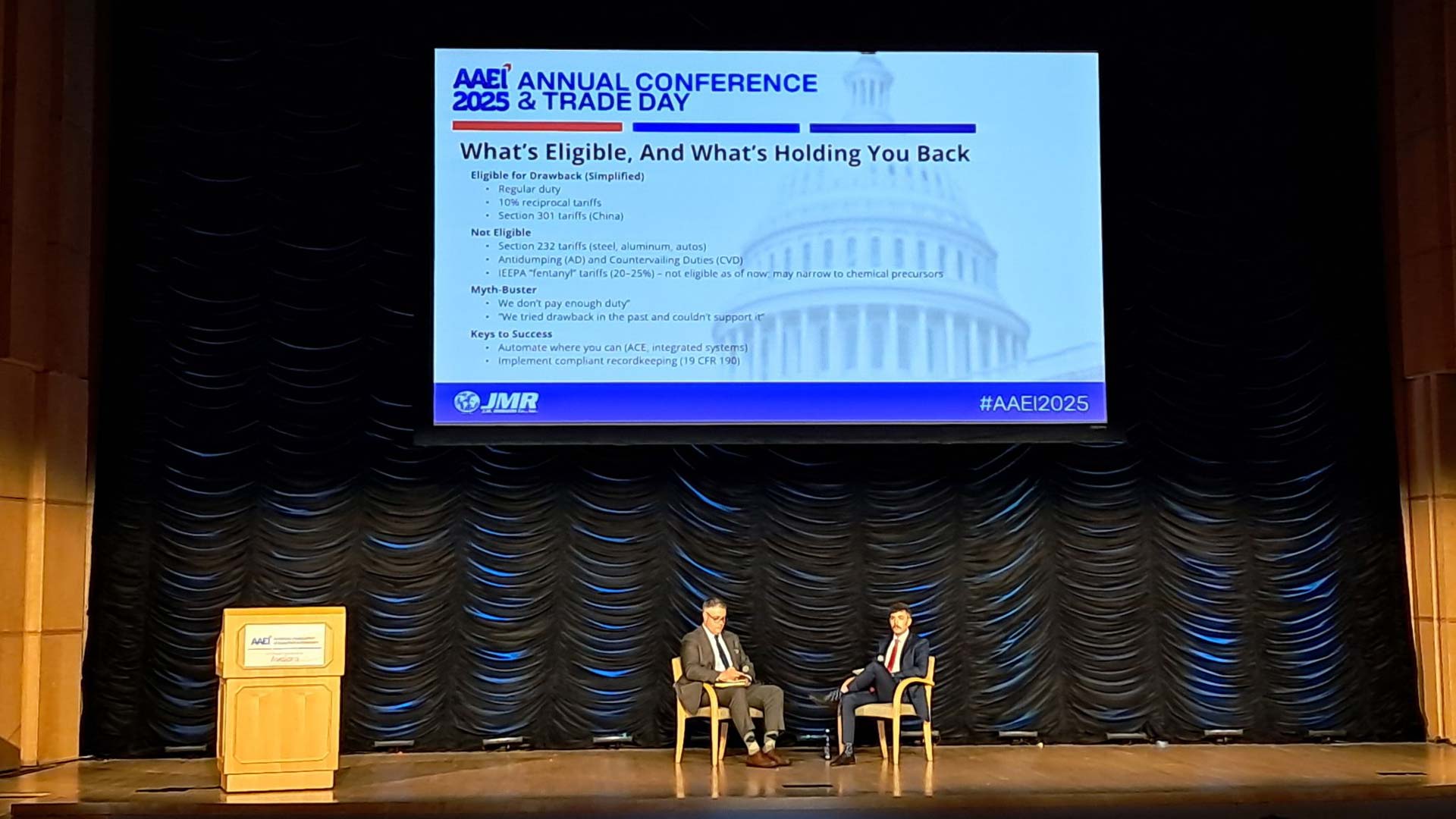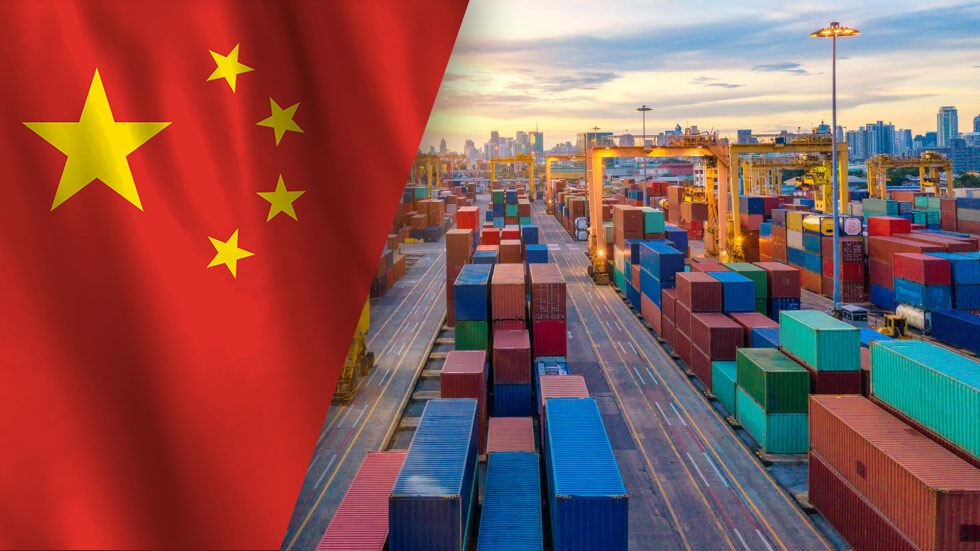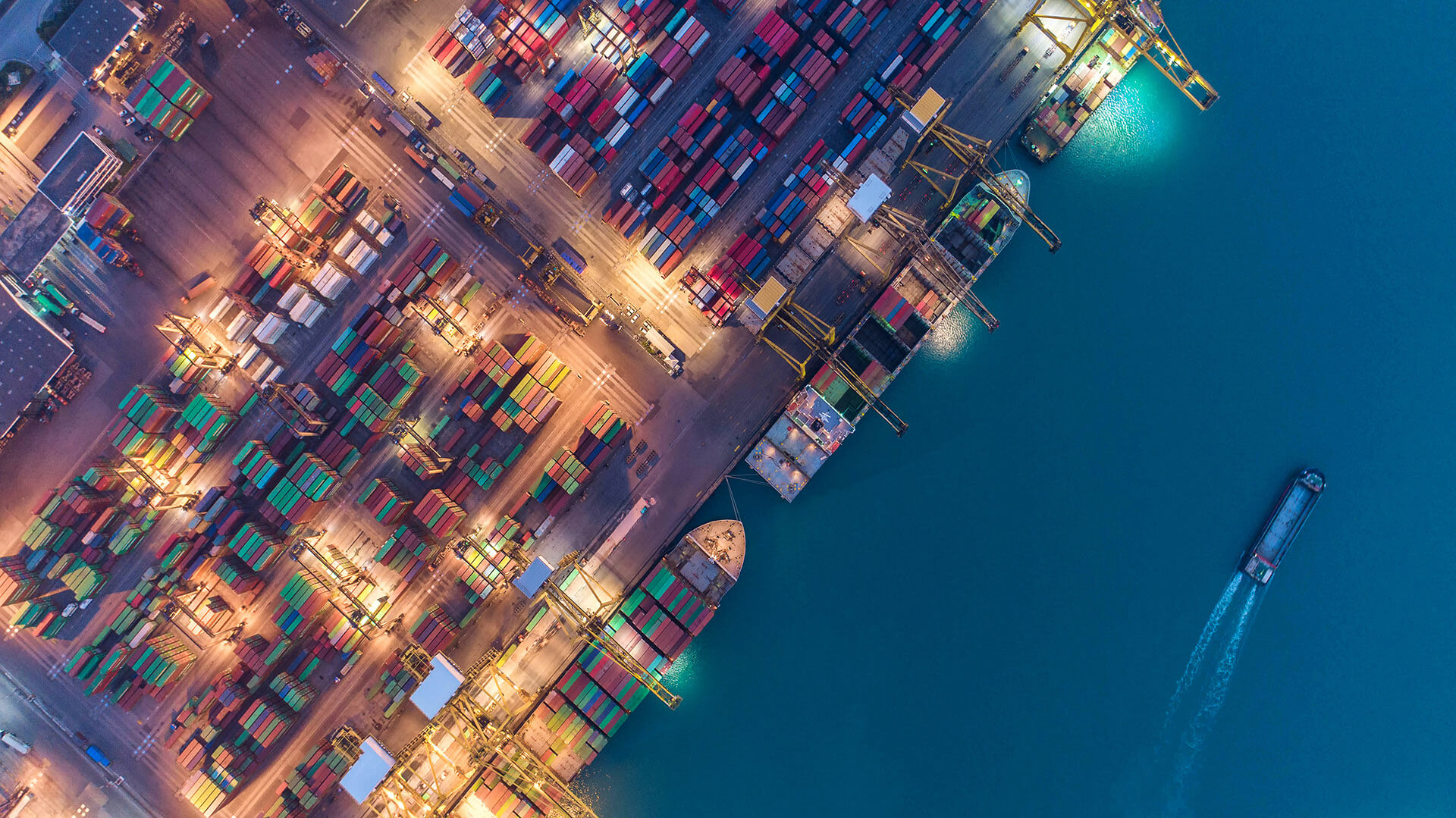A new era has dawned for US businesses as the nation’s tariffs on imported foreign goods now stand near the 20% mark, their highest level since the 1930s.* That’s a sharp uptick for anyone, but especially for the importers who have to pay the bill.
For many firms, the new era of high tariffs means rethinking how to navigate the increased cost of doing business, a cost that can quickly escalate to millions of dollars or more – a cost that few companies can bear and one that may even be unnecessary for some, according to Andrew Galloway, Senior Vice President at JM Rodgers.
In some cases, Galloway says, companies have no idea about navigating tariffs because they are simply not used to them, and many of them don’t have knowledge about duty drawbacks – a concept that allows firms to recoup much of the duty they have paid out on imports, assuming the product is exported.
Getting Basic
The fundamental point of duty drawback lies in recognizing that import duties can generally be recovered from the government if the importer re-exports the goods in whole or part and completes the required government paperwork in a timely and accurate manner.
However, there are numerous details that need to be understood about the process, and many firms have never heard of it, so they certainly don’t know how to initiate the drawback process, says Galloway.
“Where I’ve seen a real significant uptick is in a lot of customers that don’t even know what drawback is,” he says, attributing that lack of knowledge to a time when “everything was duty-free” and firms paid little or nothing by way of import tariffs.
Different Scenarios
“There’s a lot of different scenarios here, but my point is that they were paying zero duty prior to this new era,” Galloway says. “Now, all of a sudden, they’re importing $15 million worth of product and they’re getting hit with a 10% tariff.”
That means “they’re suddenly paying $1.5 million in duty.” As a result, he says, “where drawback wasn’t a thought before, it’s now almost like a must.”
His point is underlined by firms that do know how to navigate the duty drawback system. After meeting costs and fees, they are getting back 80% to 90% of their import duties, which means they are “offsetting and mitigating a big cost” of doing business.
“Again, it’s important to note that we are getting 80 to 90% back only if their total sales are exported,” Galloway says. “So, customers that export 80-90% of their goods, we can recoup the tariffs.”
Existing Customers Recalibrate
The new era of steeper tariffs is also affecting JMR’s existing clients, according to Sean Dunne, Vice President of Drawback Operations, who leads a team of specialists helping clients design efficient drawback programs to maximize refunds while ensuring compliance.
It’s too early to tell exactly how the new tariff regime, just months old, is affecting JMR’s existing clients, according to Dunne, who says “we’re just getting to the point where we can realize recoveries on some of these newly implemented duties.”
He says the results are “not so definable just yet,” but “the size of their programs is starting to rise.”
In any case, according to Dunne, “all of the firm’s clients are doing forecasting as to, ‘Okay, what’s this new duty exposure going to be and how does that affect our drawback program?'”
Clear Advice
While helping existing clients work out any possible changes to their drawback program, Dunne also has some very clear advice for firms that don’t yet have a drawback program.
“My advice is start sooner than later,” he says, also underlining the need to “understand your supply chain and where it falls in terms of qualifying for drawback.”
But he warns firms against relying on their own interpretations of the regulations governing duty drawback, insisting on the need to “talk to an expert to make sure that you’re getting the proper guidance.”
Dunne says: “Let somebody who’s within drawback on a daily basis review your supply chain and provide you with guidance. Take their guidance in terms of perhaps changing your procedures to better set yourself up for drawback.”
The All-Important Supply Chain
Galloway is quick to emphasize an importer’s need to understand the supply chain, as it affects how much or even if the imported goods qualify for duty drawback. After all, he says, there might be “some restrictions” to drawback based on Customs Regulations.
“The supply chain will dictate the type of drawback we must file on their behalf, then the restrictions are based on the Customs Regulations,” he says.
For example, if duties are paid on components that are used in a manufacturing process, they could qualify for drawback, unless the item is exported to Canada or Mexico.
“There are rules and regulations within the framework of the US-Mexico-Canada Agreement that may not state the importer is ineligible for drawback,” Galloway says. But if the US export is duty-free when it goes into Canada or Mexico, then “Boom, done. You don’t qualify for drawback on those exports.”
Understanding the Customer’s Business
Galloway says that when he starts talking to people about understanding their supply chain, he’s just trying to get a basic idea of what they’re doing.
“What are they bringing in? Where are they bringing in from? What kind of duties are they paying? What’s happening to that product? Some of it stays domestic. Some of it gets exported. Great, exported.”
But again, as he points out, that’s not the end of the story.
“I ask what percentage is getting shipped to Canada or Mexico? Because that’s going to have an effect on the type of drawback we can do, or certain restrictions that we may have,” he says.
“There are all kinds of different little things that are happening,” Galloway says, underlining the importance of having expert opinion in setting up a duty drawback account.
Learning to Avert Loss
Such experience could spell the difference between winning back monies paid for import duties or losing it all due to ignorance of the law or just costly interpretations of it. Either way, it represents a business loss that could have been avoided.
As a final point, Galloway notes the need for due diligence on the part of the importer even when it comes to their own supply chain. “What if your customs broker is misclassifying something on the front end?” he asks, pointing to another of those “little things” that can thwart drawback.
To Galloway, the answer to the question is clear enough: “If your front of the house is not clean, you’re not going to be able to get drawback on the back end in a compliant manner.”
As the new tariff era emerges, there will be much for everyone to learn, one detail after another, especially if they are importers who want to cut the increasing cost of doing business and retain a competitive edge.
Clearly, the best way to do that is via duty drawback, with experts like JMR clearing the path ahead.
*According to Yale University’s Budget Lab: https://budgetlab.yale.edu/research/state-us-tariffs-july-30-2025






